
Not all birding sites are created equal. Some sites have birds in such abundance you’re left shell-shocked, others are so grueling and demanding you are left wondering why you started birding in the first place. Some are very ordinary and average, and some complicated in ways that take some figuring out. Royal National Park, south of Sydney in Australia, is one such place. At one level it has easy rewards for the visitor, shiny trophies that make the place memorable for even the most casual visitor, but there is a depth below that initial glow. Three visits in, and I’ve only just begun to realise how much I’m missing.
The tricky thing for me is that Royal NP is in the south of Sydney, and my family lives in the north of the city. For this reason my approach has been, for my last two visits, to tackle the park when I arrive. Last time it was so damp I was driven out quickly, but not before having a magical encounter with a Superb Lyrebird. This time the weather was on my side, but my health wasn’t. Two days before I was due to fly to Sydney I was hit with a nasty winter virus that had spent the last month laying waste to my coworkers. My energy levels, and capacity to breathe, were dented, but still, by ten in the morning I was standing in the parking lot of the headquarters at Audley in the middle of the park.
For being in the country less than two hours (being an Aussie citizen really speeds up Australia’s usually slow immigration processes), its a great place to start. I didn’t really see anything rare, but its a lovely place to reacquaint myself with the common stuff. Dominating the soundwaves were huge numbers of Sulphur-crested Cockatoos, with a small number of Little Corellas mixed in. Not every huge white bird was a parrot though, and the lake also had a Great Egret among the Australian Grebes, Eurasian Coots and Dusky Moorhens. Less pleasing were the ducks. It was nice to see a lovely pair of Chestnut Teal, but the Grey Ducks all had orange feet – a sign they were actually Grallards. On the shore were the dominant big birds you see in Australia, a very vocal Australian Raven, some Australian Magpies, a hunting Grey Butcherbird, pairs of Maned Ducks cropping the grass and a pair of Laughing Kookaburras watchfully surveying the cafe patrons.
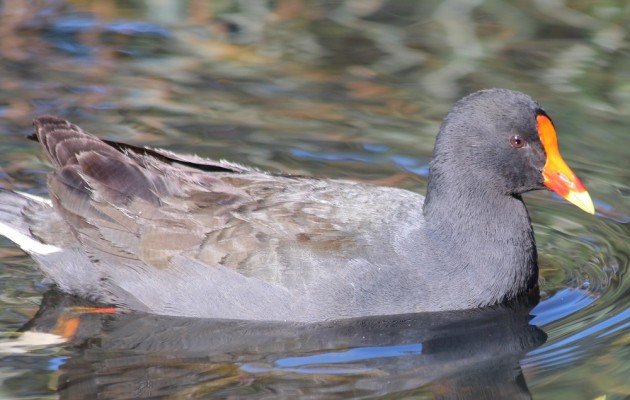 Dusky Moorhen
Dusky Moorhen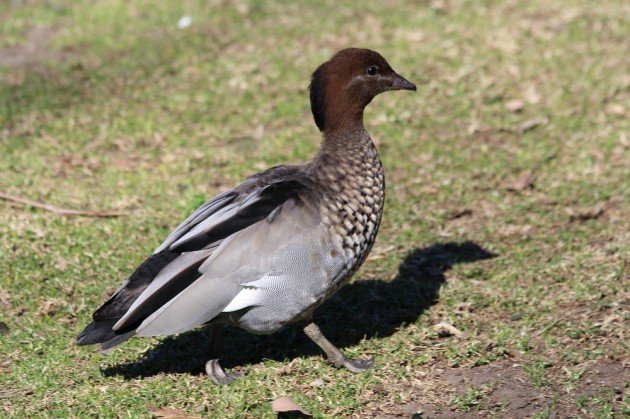 The Maned Duck – or Australian Wood Duck
The Maned Duck – or Australian Wood Duck
I walked along the river, hoping to come across a Rock Warbler poking around the massive sandstone outcrops. Alas this was not to be, and this species remains one of my nemesis birds. But I did see a host of little birds. Most lovely were a pair of Crimson Rosellas examining nesting holes.
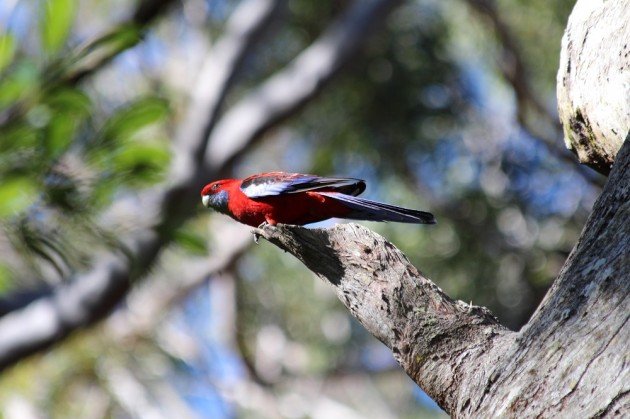 One of Australia’s prettiest parrots, the Crimson Rosella
One of Australia’s prettiest parrots, the Crimson Rosella
Heading back to the cafe I cam across a bird I didn’t recognise, and experienced a thrill at having to actually work out what I was looking at, something that doesn’t happen often to me in New Zealand. It took some work, but I eventually placed it as a juvenile Flame Robin, a rare winter migrant to the Sydney area. No photo though, sorry.
After lunch in the outstanding cafe, I drove a bit down the road to look around and area called the Wattle Forest. I had gone there hoping to see some Noisy Friarbirds, a large odd looking species of honeyeater, but saw something even better, a group of people with binoculars looking at a tree. I wandered over, and having said hi was told that a Satin Bowerbird was feeding on fruits. It took me a moment to find ( I was distracted by a Lewin’s Honeyeater!) but sure enough, there it was. One of the group helpfully told me that a pair of young Superb Lyrebirds had just wandered off down a faint trail, so I went looking for them. I never did find them but found something even better, a skulking lifer Bassian Thrush. As I crept around trying to get a photo of this elusive bird I found another, out in the open. My first Australian thrush, photographed. Result!
As I wandered back the birders were watching another tree. Up this tree they had a beautiful Golden Whistler, but soon afterwards a tiny, dainty and impossibly coloured Rose Robin wowing everyone.
At this point I left, exhausted by even the minimal walking I had done. But this trip hadn’t just been a nice day out, it had made it clear to me the strategy I need to get the most out of this place. One day I’ll do Royal right, and I think I know how to do it.First off, Royal isn’t a one day hit. I need to find a place to crash for a night nearby, rather than trekking across the the busy city at rush hour. Royal is huge, and needs time. Secondly I need help. I’ve begun to get to know the birders of Sydney, and I think learning the place with people who know the lay of the land could turn this place from a productive site to a consistently epic one.
I can’t wait to try.


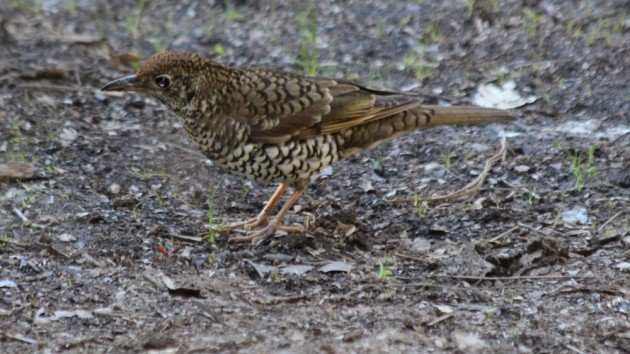
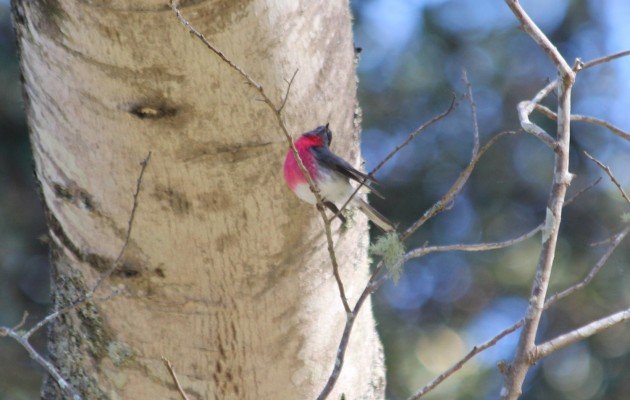











Great photos! That Rose Robin is stunning!
Hi Duncan,
RNP is awsome.
Next visit check out the river just before it drops over the rock face near Eagle Rock. I spotted a Lewin’s Rail there last year, a species that I think isn’t even on the park check list.
Great photo of Bassian Thrush-ours are all in dull, dark areas and not worth showing! We just don’t seem to get them out in the open very often when in colder climes in NSW or Tasmania! RNP is huge and does take a lot of exploring! 🙂